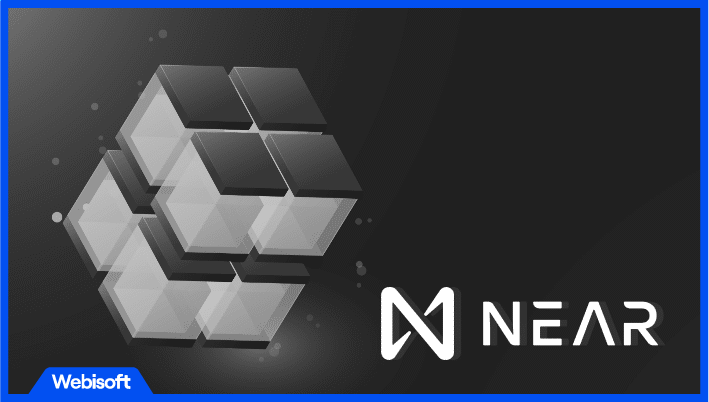The advent of blockchain technology has revolutionized the way we perceive and interact with the digital landscape. As this transformative technology continues to gain traction, numerous blockchain platforms have emerged, each with its unique set of strengths and limitations.
Among them, the NEAR Protocol has emerged as a promising contender, captivating the attention of developers and entrepreneurs alike.
NEAR Protocol represents a significant leap forward in the world of decentralized applications (dApps) and smart contracts. It offers a robust infrastructure that aims to address the scalability, usability, and security challenges that have plagued previous blockchain platforms.
By combining innovative solutions with a developer-friendly ecosystem, NEAR Protocol has set its sights on unlocking the full potential of blockchain technology.
Contents
What is NEAR Protocol?
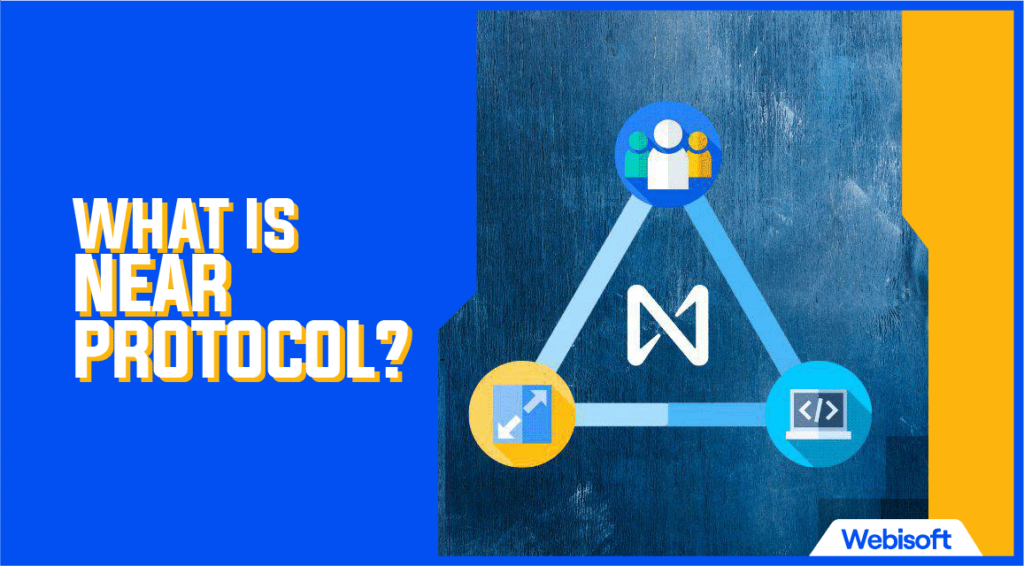
NEAR Protocol is an open-source blockchain platform designed to enable the creation and execution of decentralized applications (dApps) and smart contracts. It aims to address the scalability, usability, and security challenges faced by previous blockchain platforms, ultimately fostering widespread adoption of blockchain technology.
At its core, NEAR Protocol leverages the concept of sharding to achieve high scalability without compromising on security or decentralization. Sharding involves dividing the network into smaller, more manageable partitions called shards. Each shard can process transactions and execute smart contracts independently, enabling parallel processing and significantly increasing transaction throughput.
This innovative approach allows NEAR Protocol to handle a high volume of transactions, making it suitable for applications with large user bases and high transaction demands.
NEAR Protocol prioritizes usability and developer experience by providing an intuitive development environment. It offers a developer-friendly programming framework and a robust set of tools that simplify the process of building, deploying, and maintaining dApps.
Developers can leverage the NEAR Software Development Kit (SDK) to access a rich library of pre-built components, reducing the time and effort required to create innovative applications on the platform. Additionally, NEAR Protocol’s modular architecture allows for easy upgradability and protocol enhancements, ensuring the platform remains adaptable to evolving developer needs.
How Does NEAR Protocol Work?
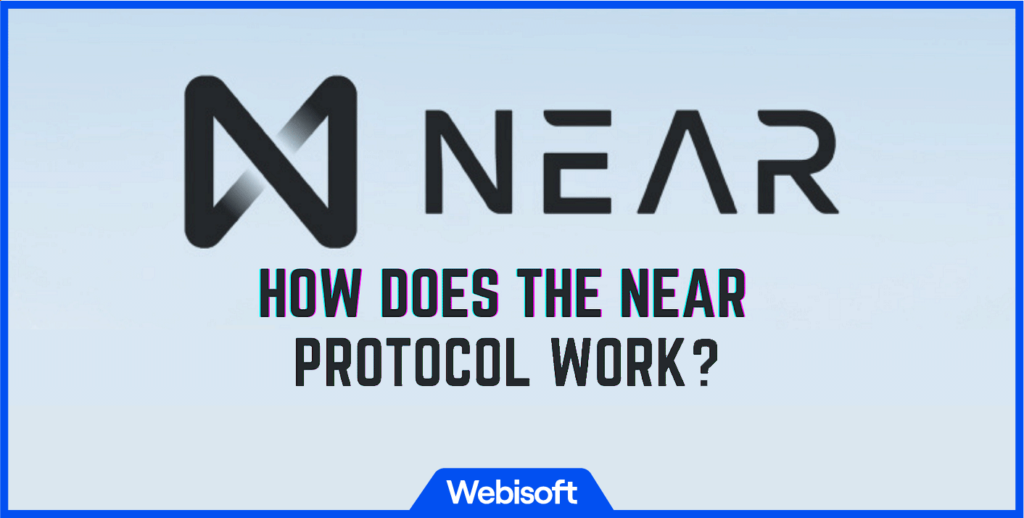
NEAR Protocol is a decentralized blockchain platform designed to enable the development and execution of decentralized applications (dApps) with a focus on scalability, usability, and developer experience. It utilizes a unique consensus mechanism called Nightshade, incorporates the Rainbow Bridge for interoperability, and features a scaling solution known as Aurora.
Nightshade Consensus Mechanism
Nightshade is NEAR Protocol’s sharding-based consensus mechanism. Sharding is a technique that partitions the blockchain into smaller subsets called shards, allowing for parallel processing of transactions and smart contracts. Nightshade divides the network into multiple shards, each capable of processing a subset of transactions and smart contract computations.
The consensus process within Nightshade involves a group of validators who are randomly assigned to validate transactions and produce blocks within their respective shards. This design improves scalability as it allows for increased transaction throughput and reduces the computational overhead required to reach consensus across the entire network.
Rainbow Bridge
The Rainbow Bridge is a vital component of the NEAR Protocol that facilitates interoperability between NEAR and other blockchain networks, such as Ethereum. It enables the transfer of digital assets and tokens across different blockchains, creating a seamless bridge between ecosystems.
The Rainbow Bridge achieves this interoperability through a two-way token transfer mechanism. When assets are transferred from Ethereum to NEAR, they are locked on the Ethereum blockchain and minted as corresponding NEAR tokens on the NEAR blockchain. Similarly, when assets are transferred back from NEAR to Ethereum, the NEAR tokens are burned, and the corresponding assets are unlocked on the Ethereum network.
This interoperability feature allows developers to leverage the existing Ethereum ecosystem while taking advantage of NEAR’s scalability and developer-friendly infrastructure.
Aurora
Aurora is a scaling solution built on top of NEAR Protocol that aims to provide compatibility with the Ethereum Virtual Machine (EVM) and Ethereum tooling. It allows developers to deploy their existing Ethereum smart contracts on the NEAR blockchain, benefiting from NEAR’s scalability and low transaction costs.
By running Ethereum contracts on NEAR through Aurora, developers can achieve significant performance improvements compared to the Ethereum mainnet. Aurora accomplishes this by leveraging NEAR’s sharding and Nightshade consensus mechanism, enabling faster transaction processing and better scalability.
Aurora is designed to be highly compatible with Ethereum, allowing developers to seamlessly migrate their projects and utilize familiar tools, libraries, and frameworks. This compatibility makes it easier to tap into NEAR’s ecosystem while retaining the benefits of Ethereum’s extensive developer community and infrastructure.
In summary, NEAR Protocol utilizes the Nightshade consensus mechanism to achieve scalability through sharding. The Rainbow Bridge enables interoperability between NEAR and other blockchains, with a specific focus on Ethereum. Lastly, Aurora provides a seamless experience for developers by allowing them to run Ethereum contracts on the NEAR blockchain, taking advantage of NEAR’s scalability and low transaction costs.
What is Stake Farming?

Stake farming, also known as yield farming or liquidity mining, is a popular practice in decentralized finance (DeFi) that allows users to passive Income with defi staking by providing liquidity to decentralized exchanges or liquidity pools. By contributing their cryptocurrencies to a liquidity pool, users receive liquidity tokens that represent their stake in the pool.
In addition to the liquidity tokens, users can also receive additional rewards in the form of governance tokens or native platform tokens, which serve as incentives for their participation. These rewards can be further staked to earn even more tokens, providing users with an opportunity to generate passive income through their participation in DeFi protocols.
While stake farming presents an attractive opportunity for earning rewards, it’s important for users to be aware of the associated risks. One such risk is impermanent loss, which occurs when the value of the contributed assets fluctuates compared to holding them outside the liquidity pool.
Another risk involves the potential vulnerabilities of smart contracts that power the stake farming protocols. Users should carefully research and understand these risks before engaging in stake farming activities to make informed decisions and protect their assets.
Here are the two ways of NEAR Protocol staking
Validator and delegator staking are two roles commonly associated with proof-of-stake (PoS) blockchain networks. These roles involve participants staking their cryptocurrency holdings to support the network’s consensus and earn rewards. Let’s explore each role in more detail:
1. Validator Staking
Validators are crucial participants in PoS networks responsible for validating transactions, creating new blocks, and maintaining network security. Validators are typically required to hold and stake a certain amount of the native cryptocurrency of the blockchain network they are validating.
Here’s how validator staking works:
- Validators must meet a minimum stake requirement, which involves locking up a specified amount of the network’s cryptocurrency as collateral. This stake demonstrates the validator’s commitment to the network and reduces the risk of malicious behavior, as they would lose their stake if they act against the network’s rules.
- validators participate in the consensus protocol by proposing and validating blocks of transactions. They compete to be selected to create blocks based on factors like their stake, reputation, or a random selection algorithm.
- Validators actively participate in the consensus mechanism, where they propose and validate blocks, ensuring the network’s security and integrity. Validators who fulfill their duties honestly and efficiently are rewarded with additional cryptocurrency tokens as an incentive for their work. The rewards earned are typically proportional to their stake, encouraging validators to hold and maintain a significant stake in the network.
2. Delegator Staking
Delegators are participants in a PoS network who do not operate their own validator nodes but instead delegate their stake to validators they trust. Delegators contribute their cryptocurrency holdings to support a specific validator’s operations and, in turn, share in the rewards generated by the validator.
Here’s how delegator staking works:
a. Delegators choose a validator they trust and delegate their cryptocurrency holdings to that validator’s staking pool. The delegated stake does not leave the delegator’s control, but it contributes to the total stake of the validator.
b. Validators often compete for delegators’ stakes based on factors such as their track record, performance, and reputation. Validators who attract more delegated stakes can have a higher chance of being selected to create blocks and earn more rewards. Delegators receive a portion of the rewards earned by the validator, typically proportional to the amount they have delegated.
Delegator staking allows participants to support the network and earn rewards without the technical expertise and infrastructure required to operate a validator node. By delegating their stake to trustworthy validators, delegators can benefit from the rewards generated by the validator’s activities.
Both validator and delegator staking play important roles in PoS networks, promoting network security, decentralization, and community participation. They align the interests of participants by incentivizing stakeholders to act in the best interests of the network while earning rewards for their contributions.
Prominent Use Cases of NEAR Protocol
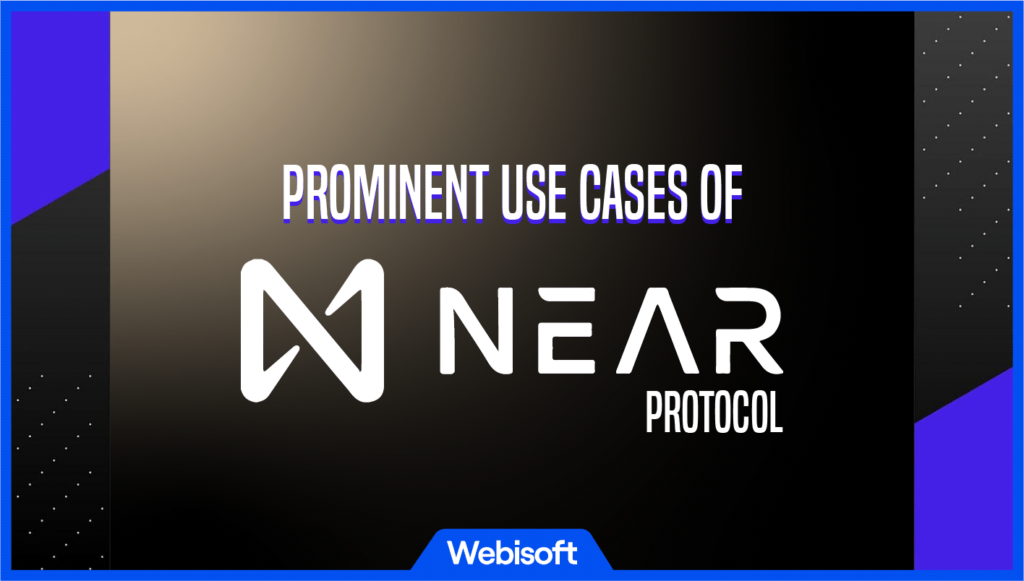
NEAR Protocol has several prominent use cases that highlight its capabilities and potential impact in the blockchain and decentralized application (dApp) space. Here are some of the notable use cases of NEAR Protocol:
1. Decentralized Applications (dApps)
NEAR Protocol provides a platform for developers to build and deploy dApps with a focus on scalability, usability, and developer experience. Developers can leverage NEAR’s infrastructure and tools to create various types of dApps, including decentralized finance (DeFi) applications, social networks, gaming platforms, and more. NEAR’s scalability solutions, such as sharding with Nightshade, make it suitable for handling high transaction volumes and accommodating large user bases.
2. Tokenization and NFTs
NEAR Protocol supports the creation and management of tokens and non-fungible tokens (NFTs). It allows developers to tokenize assets, create unique digital items, and build NFT marketplaces. NEAR’s infrastructure provides the necessary tools and smart contract capabilities for developers to establish their own token economies and enable new forms of digital ownership and trading.
3. Cross-chain Interoperability
NEAR Protocol offers interoperability through the Rainbow Bridge, which enables the seamless transfer of assets and tokens between NEAR and other blockchain networks, initially focusing on Ethereum. This interoperability unlocks various opportunities for developers and users, allowing them to leverage the strengths of multiple blockchain ecosystems and benefit from the features and liquidity of different networks.
4. Scalability Solutions
NEAR Protocol addresses the scalability challenges faced by many blockchain platforms. Its sharding-based consensus mechanism, Nightshade, allows for parallel transaction processing and smart contract execution across multiple shards. This design significantly improves the network’s scalability and increases the transaction throughput, making it more efficient and cost-effective for dApps and users.
Reasons to Choose NEAR Protocol for Your Next Project
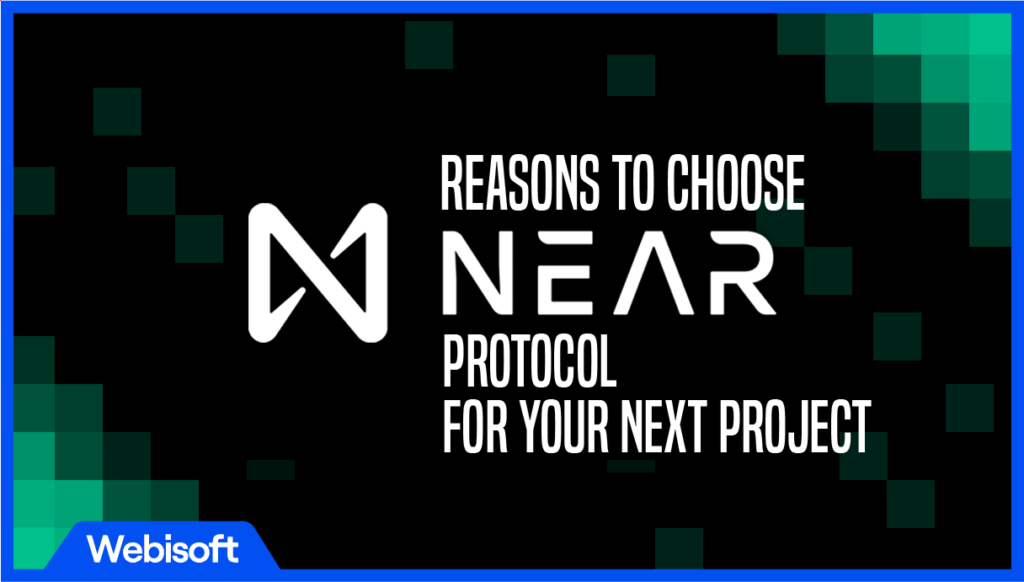
Choosing NEAR Protocol for your next development project offers several compelling reasons:
Scalability and Performance
NEAR Protocol utilizes a sharding-based consensus mechanism called Nightshade, which allows for the parallel processing of transactions and smart contracts.
This design significantly improves scalability and increases transaction throughput, enabling your project to handle high volumes of transactions and accommodate a large user base without sacrificing performance.
User-Friendly Experience
NEAR Protocol prioritizes usability and developer experience. It provides comprehensive documentation, software development kits (SDKs), and other developer tools to streamline the development process.
The platform aims to make it easier for developers to build decentralized applications (dApps) by offering familiar programming languages, developer-friendly APIs, and robust tooling.
Interoperability
NEAR Protocol features the Rainbow Bridge, enabling seamless interoperability with other blockchain networks, initially focusing on Ethereum.
This means that your project can leverage the liquidity, existing user base, and tooling available on other blockchains while benefiting from NEAR’s scalability and performance advantages.
The Rainbow Bridge opens up opportunities for cross-chain token transfers and integration with other DeFi protocols.
Cost-Effective Transactions
NEAR Protocol aims to provide cost-effective transactions for users. The platform’s infrastructure and consensus mechanism are designed to keep transaction fees low, making it more affordable for your users to interact with your dApp.
This can improve user adoption and engagement, especially in applications where frequent transactions are essential.
Thriving Ecosystem and Support
NEAR Protocol has an active and growing developer community, which means you can benefit from community support, collaboration opportunities, and shared knowledge. The NEAR ecosystem also includes various tooling, libraries, and resources that can accelerate your development process.
Security and Robustness
NEAR Protocol places a strong emphasis on security and strives to build a robust infrastructure. The platform undergoes regular audits, and its smart contract design follows best practices to minimize the risk of vulnerabilities and exploits. Choosing NEAR can provide confidence in the security of your project.
What NEAR Protocol Development Service Does Webisoft Offer?
Webisoft is a leading software development company that offers a range of services to its clients. Among its various expertise, one notable area of specialization is NEAR Protocol development. Near Protocol is a blockchain platform that enables the creation of decentralized applications (dApps) and smart contracts. Webisoft leverages its technical proficiency and experience to provide comprehensive Near Protocol development services.
Here are some of the key Near Protocol development services offered by Webisoft:
Smart Contract Development
Webisoft assists clients in developing smart contracts on the Near Protocol blockchain. Smart contracts are self-executing contracts with the terms of the agreement directly written into code. By leveraging Webisoft’s expertise in smart contract development, clients can create secure and reliable contracts that can be automatically enforced without the need for intermediaries.
dApp Development
Webisoft helps businesses conceptualize, design, and develop decentralized applications (dApps) on the Near Protocol blockchain. These dApps can offer various functionalities such as finance, gaming, NFT marketplaces, and more. Webisoft works closely with clients to understand their requirements and develop scalable and user-friendly dApps that leverage the benefits of Near Protocol.
Prototyping and MVP Development
Webisoft assists startups and enterprises in building prototypes and minimum viable products (MVPs) on the Near Protocol blockchain. This enables clients to validate their ideas, test the feasibility of their concepts, and gain early user feedback before investing in full-scale development. Webisoft’s team of skilled developers helps clients in rapidly building prototypes and MVPs to accelerate their product development lifecycle.
Integration and Migration
It provides integration services to seamlessly connect existing applications and systems with the Near Protocol blockchain. By integrating blockchain technology into their existing infrastructure, businesses can enhance security, transparency, and efficiency.
Additionally, Webisoft assists clients in migrating their applications from other blockchain platforms to Near Protocol, ensuring a smooth transition while leveraging the unique features of Near.
Custom Solutions
Webisoft understands that each client has unique requirements, and thus, offers custom Near Protocol development solutions. Whether it’s building custom smart contracts, designing specific dApps, or implementing tailored blockchain solutions, Webisoft works closely with clients to develop solutions that align with their business goals and objectives.
In summary, Webisoft offers a comprehensive range of Near Protocol development services, including smart contract development, dApp development, prototyping, integration and migration, and custom solutions. With its expertise in Near Protocol, Webisoft assists clients in harnessing the power of blockchain technology to build secure, decentralized, and innovative applications.
Final Thought
To sum up, NEAR Protocol is a groundbreaking blockchain platform designed to deliver scalable, user-centric, and developer-oriented solutions for decentralized applications.
Leveraging the Nightshade consensus mechanism, NEAR tackles scalability issues by introducing sharding, facilitating parallel processing and heightened transaction throughput. Its Rainbow Bridge boosts interoperability, allowing smooth asset transfer and integration with various blockchain networks, with an initial focus on Ethereum.
The potential applications of the NEAR Protocol are diverse, ranging from the development of scalable dApps and tokenization to cross-chain interoperability. Its focus on usability, a suite of developer tools, and cost-effective transactions make it a favorable platform for creating decentralized applications. The growing NEAR ecosystem, vibrant community, and dedication to security add to its allure as an innovation hub in the blockchain arena.
As NEAR Protocol furthers its growth and enhances its capabilities, it’s poised to catalyze the acceptance and progression of decentralized technologies, equipping both developers and users to partake in the decentralized future.
Are you ready to explore the possibilities with NEAR Protocol for your project? Webisoft’s expert team is here to guide your blockchain journey. Reach out to us today, and let’s build the future together.
